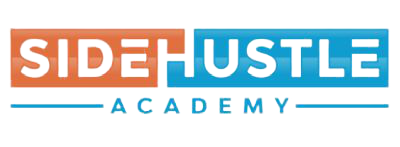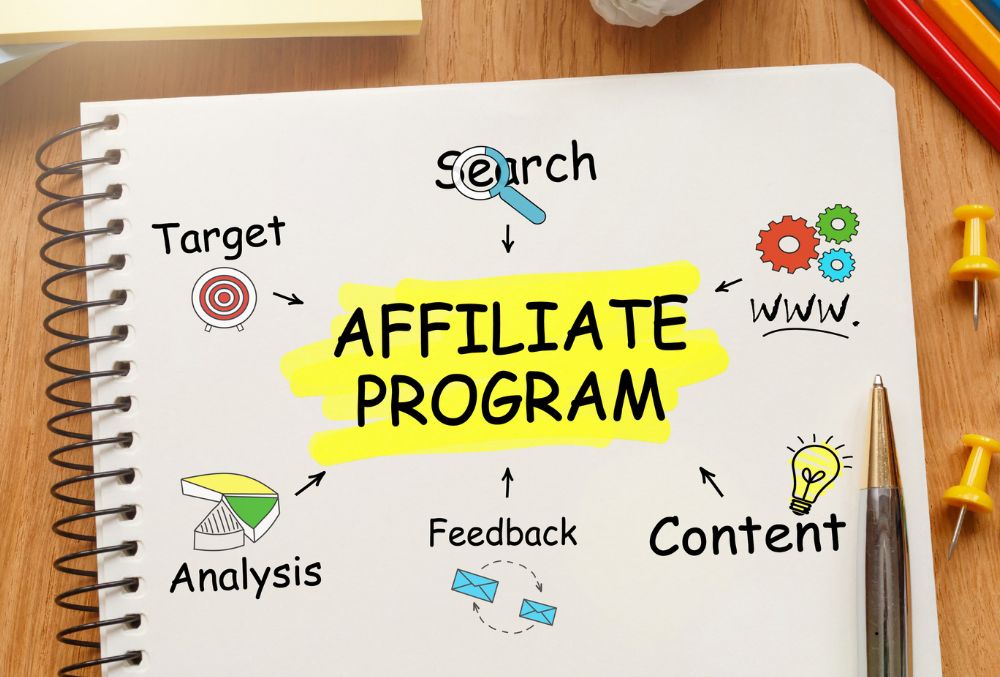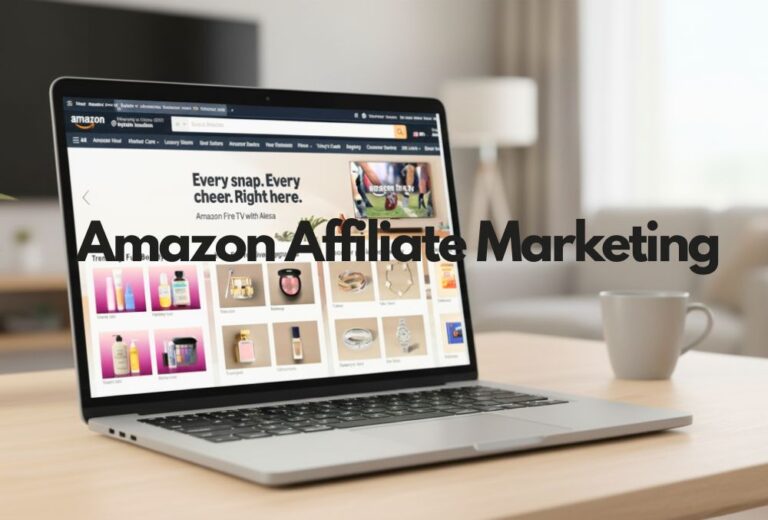High-Ticket Affiliate Marketing for Beginners: Complete Guide
If you follow the advice of most affiliate marketers, they will tell you to create a website, sign up for Amazon Associates, and start posting links. The problem with this is that any sales you make will earn very little since this program typically only pays between 3% to 5%. However, there is another option: High Ticket Affiliate Marketing.
High ticket affiliate marketing is promoting expensive products or services (usually $100 or more) and earning big commissions when people buy through your links. Instead of making a few dollars per sale like regular affiliate marketing, you can earn hundreds or even thousands of dollars from just one customer.
This is my favorite way to do affiliate marketing because you don’t need to have tens of thousands of visitors to your blog to make a big income. In this article, I’m going to share my step-by-step process to set up your own high-ticket affiliate marketing blog.
What Exactly Is High Ticket Affiliate Marketing?
Let’s cut through the jargon. High ticket affiliate marketing is simply promoting expensive products or services—typically priced at $100 or more—that pay substantial commissions per sale. We’re talking about commissions that can range from hundreds to thousands of dollars for a single referral.
Think about it this way: Instead of earning $5 for selling a basic ebook, you could earn $1,500 for referring someone to a comprehensive online course or $400 for a premium software subscription. The math is pretty compelling, right?
Here’s what makes high-ticket different from traditional affiliate marketing:
Commission Structure: High-ticket programs often offer 30-50% commissions (sometimes even more) compared to the typical 3-8% you’ll find with low-ticket items.
Sales Volume: You need far fewer sales to hit your income goals. Selling 10 high-ticket items at $500 commission each beats selling 1,000 low-ticket items at $5 each.
Target Audience: You’re typically targeting professionals, business owners, or serious enthusiasts who have both the budget and the need for premium solutions.
But here’s the catch—and there’s always a catch, isn’t there? High ticket affiliate marketing requires a different approach. You can’t just throw up some banner ads and hope for the best. Success demands strategy, patience, and genuine expertise in your chosen niche.
Step 1: Choose Your High-Ticket Niche (The Foundation of Everything)
Your niche choice can make or break your high ticket affiliate marketing success. I’ve seen too many beginners jump into overcrowded spaces like “make money online” without considering whether they can actually compete.
Here’s my framework for choosing a winning high-ticket niche:
The Sweet Spot Analysis
High Demand, High Value Problems: Look for niches where people face expensive problems that need solving. Think business software, professional development, health optimization, or luxury travel.
Personal Interest + Market Viability: You’ll be creating content about this topic for months (maybe years). If you don’t find it at least somewhat interesting, you’ll burn out before seeing results.
Competition Assessment: Competitive niches aren’t necessarily bad—they prove there’s money to be made. But you need to find your unique angle.
Top-Performing High-Ticket Niches for 2025
Based on current market trends and commission potential, here are the niches crushing it right now:
Software as a Service (SaaS): Tools like HubSpot, ClickFunnels, and Semrush offer recurring commissions that compound over time. Promote a customer who sticks around for two years, and you could earn thousands from a single referral.
Online Education: The online learning market is exploding. Programs like Authority Hacker or Amazing Selling Machine pay commissions ranging from $500 to $1,500 per sale.
Web Hosting & Development: With every business needing an online presence, premium hosting services like WP Engine and Kinsta offer substantial one-time and recurring commissions.
Finance & Investment: From trading courses to investment platforms, financial education products command high prices and impressive commission rates.
Health & Wellness: Premium supplements, fitness programs, and wellness coaching services in specific sub-niches (like biohacking or functional medicine) perform exceptionally well.
The Reality Check Questions
Before you commit to a niche, ask yourself:
- Can I create valuable content about this topic for the next 12 months?
- Do I understand the target audience’s pain points well enough to address them authentically?
- Are there established high-ticket affiliate programs in this space?
- Can I realistically compete with existing content creators?
Step 2: Research and Select High-Ticket Affiliate Programs
Not all high-ticket affiliate programs are created equal. I’ve learned this the hard way after promoting products with terrible conversion rates and even worse affiliate support.
What Makes a High-Ticket Program Worth Your Time?
Commission Structure: Look for programs offering at least 20% commissions, with 30-50% being ideal. But don’t just focus on percentages—a 20% commission on a $1,000 product beats a 50% commission on a $200 product.
Product Quality: Your reputation is on the line with every recommendation. Only promote products you’d genuinely use or recommend to a close friend.
Affiliate Support: The best programs provide marketing materials, training, and dedicated affiliate managers who actually respond to your emails.
Payment Terms: Understand the payment schedule, minimum payout thresholds, and cookie duration. A 90-day cookie period gives your referrals more time to convert compared to a 30-day window.
Track Record: Research the company’s reputation, customer reviews, and how they treat their affiliates. A quick Google search can save you from promoting questionable products.
Top High-Ticket Affiliate Programs to Consider
Here’s my curated list of programs that consistently deliver results:
| Program | Commission Rate | Product Type | Why It Works |
|---|---|---|---|
| Shopify | Up to $150 per plan | E-commerce Platform | Huge market, strong brand recognition |
| WP Engine | $100-$200 per referral | Managed WordPress Hosting | High customer retention, excellent reputation |
| ClickFunnels | 30% recurring | Marketing Software | Strong community, proven track record |
| HubSpot | 30% recurring for 12 months | CRM Software | Enterprise-level product with mass appeal |
| Semrush | $200 per sale | SEO Software | Essential tool for marketers and agencies |
The Application Process
Here’s where many beginners stumble. High-ticket programs are selective—they want affiliates who can actually drive quality traffic and conversions.
Build Your Platform First: Most programs require an established website or social media presence. Focus on creating valuable content before applying.
Craft a Compelling Application: Explain your marketing strategy, target audience, and how you plan to promote their product. Generic applications get rejected.
Start Small: If you’re new to affiliate marketing, consider starting with less competitive programs to build your track record.
Step 3: Build Your Marketing Foundation
Here’s where the rubber meets the road. You can find the perfect niche and the best affiliate programs, but without a solid marketing foundation, you’re just another person with good intentions.
Your Content Hub: Website or Social Platform?
The Website Route: A professional website gives you complete control over your content and audience. You’re not subject to algorithm changes or platform policies. Plus, SEO can drive consistent, long-term traffic.
Resource: Click here to sign up with Hostinger. This is the hosting platform I use to run all of my blogs.
The Social Media Route: Platforms like YouTube, LinkedIn, or Instagram can help you build an audience faster, especially if you’re comfortable on camera or creating visual content.
My Recommendation? Start with one primary platform but diversify as you grow. I’ve seen too many creators lose everything when their main platform changed its algorithm overnight.
Content Strategy for High-Ticket Success
High-ticket products require different content approaches than impulse purchases:
Educational Content: Your audience needs to understand why they need this expensive solution. Create in-depth tutorials, case studies, and comparison content.
Trust-Building Content: People don’t buy high-ticket items from strangers. Share your expertise, results, and genuine experiences with the products you promote.
Problem-Aware Content: Target people who already know they have a problem but aren’t sure about the solution. This is your sweet spot for high-ticket conversions.
Content Calendar Example
Here’s how I structure content for a SaaS affiliate campaign:
- Week 1: Problem identification post (“Why Your Current Email Marketing Isn’t Working”)
- Week 2: Solution overview (“What Professional Email Marketing Looks Like”)
- Week 3: Tool comparison (“HubSpot vs. Mailchimp vs. ActiveCampaign: Which Is Right for You?”)
- Week 4: Case study (“How I Increased Email Revenue by 340% with HubSpot”)
Step 4: Master High-Ticket Marketing Strategies
High-ticket affiliate marketing isn’t about volume—it’s about precision. Every piece of content, every email, every social media post should serve a strategic purpose.
Strategy #1: The Authority-First Approach
Before you can sell expensive products, people need to see you as an authority in your niche. This isn’t about fake it ’til you make it—it’s about consistently demonstrating real knowledge and value.
Content Depth Over Breadth: Instead of covering 20 topics superficially, become the go-to expert on 3-5 key areas within your niche.
Original Research and Data: Conduct surveys, analyze industry trends, or share detailed case studies from your own experience.
Thought Leadership: Share your unique perspectives on industry developments. Don’t just regurgitate what everyone else is saying.
Strategy #2: The Relationship Marketing System
High-ticket sales happen through relationships, not through random banner clicks. You need systems that nurture potential customers over time.
Email Sequences That Convert: Develop automated email sequences that educate, build trust, and gradually introduce your affiliate recommendations.
Personal Connection: Use storytelling to help people connect with you personally. Share your struggles, successes, and genuine experiences.
Value-First Mindset: Always lead with value. If someone could get tremendous benefit from your content without ever buying anything, you’re on the right track.
Strategy #3: The Strategic Partnership Model
Some of the biggest affiliate marketing successes come from strategic partnerships rather than solo efforts.
Joint Ventures: Partner with other creators in your niche for cross-promotion opportunities.
Influencer Collaborations: Work with micro-influencers who have engaged audiences in your target market.
Expert Interviews: Interview industry experts and naturally weave in relevant affiliate recommendations during the conversation.
Step 5: Build Your Sales Funnel
Random traffic doesn’t convert to high-ticket sales. You need a systematic approach that guides prospects from initial awareness to purchase decision.
The High-Ticket Funnel Structure
Top of Funnel (Awareness): Educational content that attracts your ideal audience through SEO, social media, or paid advertising.
Middle of Funnel (Consideration): Deeper content that positions you as an authority and introduces potential solutions to their problems.
Bottom of Funnel (Decision): Specific product recommendations, comparisons, and conversion-focused content.
Email Marketing for High-Ticket Conversions
Email remains the highest ROI channel for affiliate marketing, especially for high-ticket items. Here’s my proven email strategy:
Welcome Series (5-7 emails): Introduce yourself, share your story, and provide immediate value while building trust.
Educational Newsletter: Weekly or bi-weekly content that helps your audience solve problems in your niche.
Product-Focused Campaigns: When you’re promoting a specific affiliate product, create a dedicated email sequence that addresses objections and highlights benefits.
Sample High-Converting Email Sequence
- Email 1: Welcome + immediate value delivery
- Email 2: Your story + why you’re in this niche
- Email 3: Case study or success story
- Email 4: Common mistake or problem in the niche
- Email 5: Tool/solution introduction (soft affiliate mention)
- Email 6: Deep dive into the recommended solution
- Email 7: Objection handling + final recommendation
Step 6: Drive Quality Traffic
Traffic is the lifeblood of affiliate marketing, but for high-ticket success, quality trumps quantity every time. It’s better to have 100 highly targeted visitors than 10,000 random ones.
Organic Traffic Strategies
SEO for Long-Term Growth: Target long-tail keywords that indicate buying intent. Someone searching for “best CRM for small business 2025” is much closer to a purchase than someone searching for “what is CRM.”
Content Marketing: Create comprehensive, helpful content that naturally attracts your target audience. Think ultimate guides, in-depth reviews, and case studies.
Social Media Organic: Share valuable insights, engage in relevant communities, and build genuine relationships with your audience.
Paid Traffic Considerations
Start Small: High-ticket products often have higher customer lifetime values, which can support paid advertising. But start with small budgets and test thoroughly.
Platform Selection: LinkedIn ads work well for B2B software. Facebook can work for educational products. Google Ads excel for people actively searching for solutions.
Tracking and Attribution: Use proper UTM parameters and tracking to understand which traffic sources drive the best conversions.
The Content SEO Multiplier Effect
Here’s a strategy that’s working incredibly well right now: Create one comprehensive piece of content each month, then break it down into smaller pieces across multiple platforms.
For example, a 4,000-word guide becomes:
- 5-7 blog posts covering individual sections
- 10-15 social media posts highlighting key points
- 2-3 email newsletters diving deeper into specific aspects
- 1 video summarizing the main concepts
Step 7: Track, Analyze, and Optimize
High-ticket affiliate marketing success comes from continuous optimization. You need to know what’s working, what isn’t, and how to improve your results over time.
Essential Metrics to Monitor
Click-Through Rates: Are people clicking your affiliate links? Low CTR might indicate poor content-link integration or weak calls-to-action.
Conversion Rates: What percentage of your referrals actually convert? This is your most important metric for high-ticket success.
Earnings Per Click (EPC): How much you earn on average for each click to your affiliate links. This helps you compare the effectiveness of different programs and content pieces.
Customer Lifetime Value: For recurring commission programs, track how long referred customers typically stay subscribed.
Tools for Tracking Success
Google Analytics: Set up goal tracking for affiliate link clicks and conversions.
UTM Parameters: Tag your links to understand which content and traffic sources drive the best results.
Affiliate Network Reports: Most programs provide detailed reporting on clicks, conversions, and commissions.
Heat Mapping Tools: Understand how visitors interact with your content and where they’re most likely to click affiliate links.
Optimization Strategies That Work
A/B Testing: Test different headlines, call-to-action buttons, and content structures to improve conversion rates.
Content Updates: Regularly update your top-performing content with new information, better affiliate integrations, and improved user experience.
Seasonal Adjustments: Many high-ticket purchases follow seasonal patterns. Adjust your content calendar accordingly.
Common Mistakes to Avoid (Learn from My Expensive Lessons)
Let me share some painful lessons I learned the hard way, so you don’t have to repeat my mistakes.
Mistake #1: Promoting Too Many Products at Once
When I started, I thought more affiliate programs meant more income potential. Wrong. Splitting your focus means you can’t build real expertise or trust in any single area. Pick 2-3 core programs and master them before expanding.
Mistake #2: Ignoring Your Audience’s Budget Reality
Just because a program offers high commissions doesn’t mean your audience can afford it. A $5,000 course might have amazing commission rates, but if your audience consists of college students, you’ll struggle to make sales.
Mistake #3: Over-Promoting Without Adding Value
I once created an email sequence that was basically seven sales pitches in a row. Unsubscribe rates were brutal. Your audience needs genuine value, not constant promotion.
Mistake #4: Not Disclosing Affiliate Relationships
This isn’t just an ethical issue—it’s a legal requirement. Always disclose your affiliate relationships clearly. It actually builds trust when done authentically.
Mistake #5: Focusing Only on Commission Rates
A 50% commission on a product that never converts is worth less than a 20% commission on a product that sells consistently. Consider the entire picture, not just the percentage.
Advanced Strategies for Scaling Your Success
Once you’ve mastered the basics, these advanced strategies can significantly boost your high-ticket affiliate income.
The Authority Website Method
Create comprehensive resource sites that become the go-to destination for information in your niche. Think of sites like Wirecutter or PC Mag, but focused on your specific vertical.
Content Depth: Create the most comprehensive resources available on key topics in your niche.
Regular Updates: Keep your content fresh and current. High-ticket buyers expect the latest information.
Multiple Monetization: Don’t rely solely on affiliate commissions. Add consulting, courses, or other revenue streams to maximize each visitor’s value.
The Partnership Leverage Strategy
Affiliate Manager Relationships: Build strong relationships with your top-performing affiliate programs. Good managers can provide exclusive offers, higher commission rates, and early access to new products.
Cross-Promotion Networks: Partner with non-competing affiliates in related niches for mutual promotion opportunities.
Expert Positioning: Become known as the go-to expert for specific high-ticket categories. This often leads to speaking opportunities, consulting gigs, and exclusive affiliate deals.
The Content Multiplication System
Repurposing Mastery: Turn every piece of content into multiple formats. A comprehensive review becomes a blog post, YouTube video, podcast episode, email series, and social media campaign.
Seasonal Refreshing: Update and republish your top-performing content annually with new data, examples, and affiliate recommendations.
Community Building: Create Facebook groups, Discord servers, or other communities around your niche. Engaged communities convert much better than passive audiences.
Real Success Stories (Proof That This Works)
Let me share some inspiring examples of high-ticket affiliate marketing success to show you what’s possible.
Case Study: John Dykstra
John built a blog focused entirely on project management software reviews. By becoming the definitive resource for comparing tools like Bluehost, earning six figures a year.
His Strategy: A helpful and active website, social media insights, along with a YouTube Channel and newsletter.
Key Lesson: Extreme specialization can beat general knowledge every time.
The Future of High Ticket Affiliate Marketing
The landscape is constantly evolving, and staying ahead of trends is crucial for long-term success.
Emerging Opportunities
AI and Automation Tools: As businesses adopt AI solutions, there’s huge opportunity for affiliates who understand and can explain these complex tools.
Sustainability and Green Business: Eco-friendly business solutions and sustainable products command premium prices and higher commissions.
Remote Work Infrastructure: The remote work trend has created demand for high-ticket productivity tools, coworking spaces, and professional development programs.
Platform Changes to Watch
Privacy Regulations: Cookie tracking limitations are changing how affiliate marketing works. Focus on building owned audiences (email lists, communities) rather than relying solely on tracking pixels.
Content Platform Evolution: Stay adaptable as new platforms emerge and existing ones change their algorithms and policies.
Voice and Visual Search: Optimize your content for how people actually search today, including voice queries and image searches.
Your Action Plan: Getting Started This Week
Theory without action is worthless. Here’s your concrete seven-day action plan to begin your high ticket affiliate marketing journey.
Day 1-2: Niche Research and Selection
- Research 5 potential niches using the criteria outlined earlier
- Analyze competition and opportunity in each niche
- Make your final niche selection and document your reasoning
Day 3-4: Affiliate Program Research
- Identify 10-15 potential high-ticket affiliate programs in your niche
- Research their commission structures, requirements, and reputations
- Apply to 3-5 programs that align with your goals
Day 5: Platform Setup
- Set up your primary content platform (website, YouTube channel, etc.)
- Create your basic branding and profile information
- Install necessary tracking and analytics tools
Day 6: Content Planning
- Develop a 30-day content calendar
- Create your first piece of educational content
- Set up your email marketing system
Day 7: Community and Learning
- Join relevant communities in your niche
- Follow successful affiliates in your space
- Set up systems for ongoing learning and improvement
Conclusion: Your High-Ticket Future Starts Now
High ticket affiliate marketing isn’t a magic bullet that will make you rich overnight. It requires strategy, patience, and genuine commitment to providing value to your audience. But for those willing to put in the work, the rewards can be life-changing.
The difference between struggling affiliates and successful ones isn’t luck—it’s approach. While others chase every new program and tactic, successful high-ticket affiliates focus on building real expertise, genuine relationships, and systems that compound over time.
You now have the roadmap. You understand the strategies, you know which programs to target, and you have a concrete action plan to get started. The only question left is: Will you take action?
The high-ticket affiliate marketing opportunity won’t wait forever. As more marketers discover these strategies, competition will increase. But right now, in early 2025, there’s still a tremendous opportunity for newcomers who approach this systematically.
Your future self is counting on the decisions you make today. Don’t let another month pass wondering “what if.” Start building your high-ticket affiliate marketing business this week.
Ready to dive deeper? Join thousands of successful affiliate marketers who are already implementing these strategies and building substantial income streams through high-ticket promotions. Your journey to affiliate marketing success starts with a single step—take it today.
Remember: Success in high ticket affiliate marketing comes from providing genuine value to your audience while recommending products that truly solve their problems. Focus on building trust and expertise, and the commissions will follow naturally.








